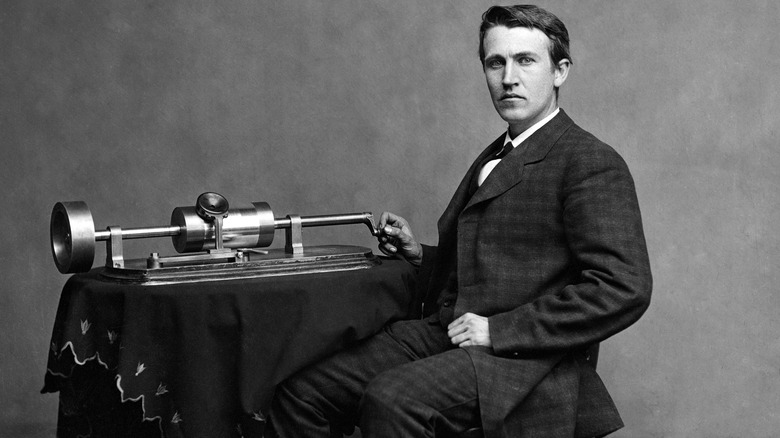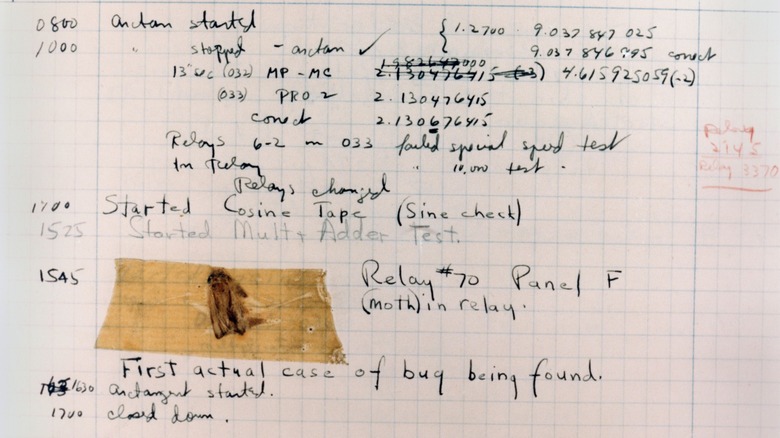The Origin Of The Term Computer Bug Is A Lot Older Than You Think
As modern society becomes reliant on technology, it also becomes more prone to falling victim to computer bugs, which are errors or flaws in a computer's software or hardware (via Interesting Engineering). Bugs can make it hard for us to use phones and computers, but they have disrupted far more than phone service. According to Wired, a computer bug was once responsible for medical establishments releasing lethal doses of radiation. In another instance, the Mariner I space probe went off its path because of a bug in the software code. The mistake resulted in Mission Control aborting the mission and blowing up the probe over the Atlantic Ocean.
You might think that the term "computer bug" is a 21st century problem, but it goes back further than that. To find the first written mention of the word "bug" in relation to the machines we work with, we have to go back over 140 years, per Interesting Engineering.
The first computer bug was called a 'callbellum'
The man responsible for coining the term "bug" was none other than Thomas Edison. According to Interesting Engineering, he reportedly used the word to describe his experience with an "apparatus" he was working on, which was a telephone. In a letter to William Orton, an associate, the inventor wrote, "You were partly correct, I did find a 'bug' in my apparatus, but it was not in the telephone proper. It was of the genus 'callbellum.' The insect appears to find conditions for its existence in all call apparatus of telephones" (via Interesting Engineering). Of course, "callbellum" was something Edison made up, and while he might have had some fun coming up with the word, the bugs he continued to encounter were real and probably a source of frustration.
In fact, a few months later, Edison went on to write to Theodore Puskas that he ran into bugs with all of his inventions, explaining that difficulties arise after he begins working on them. "[It is] then that 'Bugs' — as such little faults and difficulties are called — show themselves and months of intense watching, study and labor are requisite before commercial success or failure is certainly reached," per Interesting Engineering.
The first real computer bug was an insect
While Edison may have been the first person to coin the word "bug" in relation to the challenges that are a part of working with machines, someone else had the bad luck of encountering a literal bug in an actual computer a few years later. That person was Grace Hopper, an admiral in the Navy who worked in the engineering program at Harvard (via Atlas Obscura).
The year was 1947, and a Mark II Aiken Relay computer was malfunctioning at the university. Hopper was the one who took the time to find out why. The machine was nothing like the computers we use today. It was huge, as images posted by the Smithsonian Institution reveal, so finding the problem must have been a daunting experience. But Hopper was apparently up for it, and she discovered the problem was a real bug — a moth, to be exact — that had made its way into the internal mechanisms of the computer. In a logbook, she comically noted that it was the first actual case of a bug being found. And as proof, she taped the moth (above) to the page (per Atlas Obscura).


